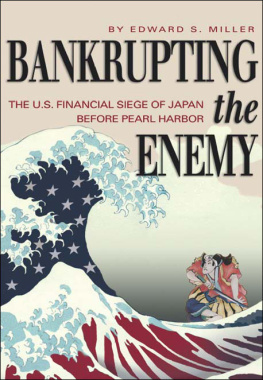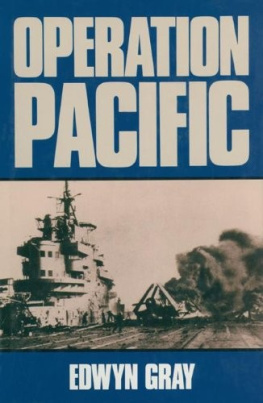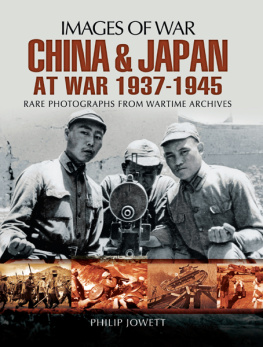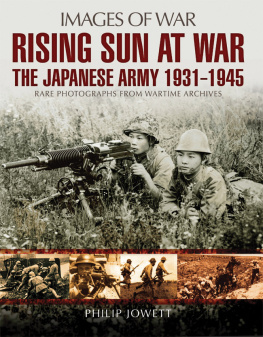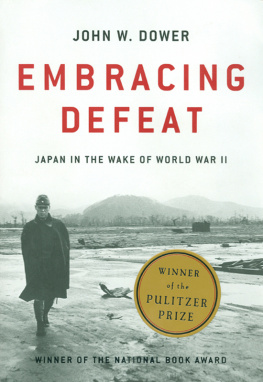WAR PLAN ORANGE....

| The U.S. Strategy to Defeat Japan, 18971945 |
War Plan
ORANGE
EDWARD S. MILLER
NAVAL INSTITUTE PRESS ANNAPOLIS, MARYLAND
Naval Institute Press
291 Wood Road
Annapolis, MD 21402
1991 by the United States Naval Institute
Annapolis, Maryland
All rights reserved. No part of this book may be reproduced or utilized in any form or by any means, electronic or mechanical, including photocopying and recording, or by any information storage and retrieval system, without permission in writing from the publisher.
First printing in paperback, 2007
ISBN 978-1-61251-146-7 (eBook)
The Library of Congress has cataloged the hardcover edition as follows:
Miller, Edward S.
War Plan Orange: the U.S. strategy to defeat Japan, 1897-1945 / Edward S. Miller.
p. cm.
Includes bibliographical references (p. ) and index.
1. United States. NavyHistory20th century. 2. Military planningUnited StatesHistory20th century. 3. World War, 19391945CampaignsPacific. 4. World War, 19391945Naval operations, American. 5. World War, 19391945Naval operations, Japanese. I. Title.
VA50.M53 1991
359.030973dc20
91-14361 CIP

 Print editions meet the requirements of ANSI/NISO z39.48-1992 (Permanence of Paper).
Print editions meet the requirements of ANSI/NISO z39.48-1992 (Permanence of Paper).
14 13 12 11 10 9 8 7 9 8 7 6 5 4
To Joyce: We planned well together
Contents
MAPS
FIGURE
A lmost twenty years ago, Edward Miller took a break from his hectic schedule as a senior business executive to visit the Naval Historical Centers Operational Archives, where he proceeded to read a number of documents relating to naval strategy in the Pacific. At that time I directed the Operational Archives, which normally served as a source of information for naval officers, other naval professionals, academic historians, and naval veterans. I remember how impressed my staff and I were that Mr. Millers interest brought him to our specialized office located in one of the former industrial buildings of the Washington Navy Yard, an area far off the beaten path for the usual visitor to Washington. Over the ensuing years Mr. Miller returned many times to the Naval Historical Center, and we became even more impressed as a project begun as an avocation evolved into a highly professional investigation of the origins and evolution of the navys war plan for a conflict with Japan. The result of those many years of effort is a book that is of central importance to students of American military affairs in the twentieth century.
Despite the fact that Mr. Millers career was spent in the corporate world, rather than in the classroom, his book is an outstanding example of historical research. His investigation of War Plan Orange led him to numerous records in the Naval Historical Center and the National Archives, as well as in other repositories, that generally see little use by historians. Because he began with no preconceived historical theories, the author posed his own imaginative questions in assessing the meaning of the large body of source materials that he examined. Throughout the process, Mr. Miller took an admirably skeptical point of view in assessing the validity of his evidence.
Although there have been suggestions that little new remains to be said about the background to World War II, this study shows that fruitful research is still being done on that subject. One of Ed Millers major contributions is to detail the sustained and generally effective planning process that lay behind the preparation of the various versions of War Plan Orange. He rejects the widespread clich that the navys leadership in the prewar years was obsessed by battleships and generally out of touch with the realities of modern warfare. Instead, the author finds that many of the navys strategists were farsighted leaders who devised the flexible strategic concept that led inexorably to Imperial Japans surrender in 1945. Mr. Miller demonstrates how the long-established principles of this plan were used by Admirals King and Nimitz and the other American naval leaders of World War II as they commanded the American forces that fought across the Pacific to the enemys doorstep.
Some historians argue that Plan Orange was a failure since it did not prevent the Japanese seizure of the Philippines. Mr. Miller demonstrates, however, that this contention fails to comprehend the major objectives in the minds of naval strategists. For those officers, the plan was not a defensive measure designed to hold territory. Instead, it represented an offensive means of defeating an aggressive Japan, the source of Americas security problem in the Far East.
In preparing this book, Mr. Miller benefited from the insights of modern naval strategists based in the Pentagon, at the Naval War College, and at other naval educational institutions. These contacts indicated that the strategy-making of today echoes the planning processes and many of the concepts used in formulating War Plan Orange between 1897 and 1941. This study of how success was achieved in the past becomes all the more relevant under these circumstancesnot only to historians, but also to future makers of national security policy.
Throughout its existence, the navy has attracted the interest of many gifted historians. These individuals include uniformed naval personnel as well as civilians with diverse interests and backgrounds. War Plan Orange demonstrates how valuable this attention can be. The navys historians look forward to future contributions from the pen of Edward Miller that will enlighten us on the meaning and current relevance of our institutions rich past.
DEAN C. ALLARD
Director of Naval History
Department of the Navy
T his book has been a labor of love for eighteen years. I owe a debt of gratitude to many who encouraged and aided it. Prominent among them are the dedicated archivists who guided me through their arcane warrens, especially Dean Allard, Director of Naval History, who believed in my work and gave it his unstinting support. His ever-helpful assistants Cal Cavalcante, Kathleen Lloyd, Mike Palmer, and especially Martha Crawley were tireless. The staff at the Modern Military Branch of the National Archives was ever-accommodating, notably John Taylor, Richard Von Doenhoff, George Chalou, Richard F. Cox, and Gibson B. Smith. So were Evelyn M. Cherpak at the Naval Historical Collection in Newport and the knowledgeable Chuck Haberlein at the Naval Photographic Center.
I was astonished at the warm reception extended by military historians when I first entered their close-knit world. I owe thanks to many: to Roger Pineau, scholar emeritus, for nudging me onward; to the superstar authors of the current strategic scene, Paul M. Kennedy of Yale University, Ronald Spector, recently Director of Naval History, and scholars of strategy including Norman Friedman, Clark Reynolds, William R. Braisted, Jr., and Forrest C. Pogue, all of whom enrolled me in the club. I wish to express gratitude to my boyhood friend David Kahn, the doyen of the history of military intelligence, for his enthusiastic prodding since junior high school.


